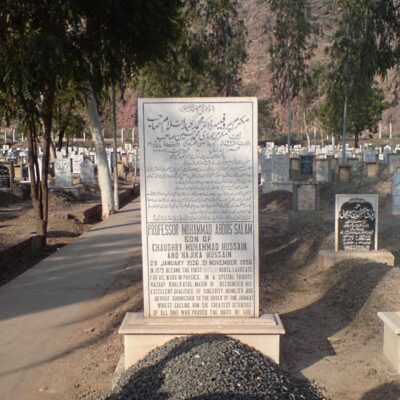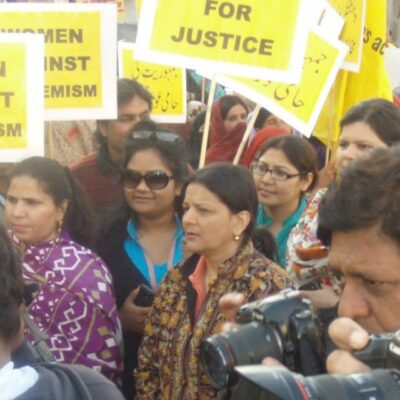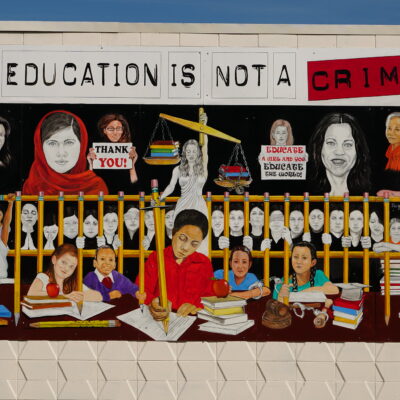Minoritised groups are often the target of violence under repressive regimes and during violent conflicts and experience exclusion in post-conflict political settlements. This article examines these dynamics by discussing the history of persecution as well as human rights advocacy by the Hazaras in Afghanistan. It argues that the Hazaras pursue a human rights centred approach that holds significant potential for fostering a more inclusive and sustainable reconciliation process in Afghanistan.
Exclusion, minoritisation and conflict
Identity-based exclusion and horizontal inequalities are significant drivers of civil war and armed conflict globally. Minoritisation, in this context, is often a deliberate product of exclusionary regimes that seek to consolidate power and resources within a dominant group, systematically marginalising others based on their ethnicity, religion, or other identity markers. These regimes deny minoritised groups meaningful political, economic, and social participation.
Politically, minoritised groups are often denied adequate representation in governance structures, excluded from decision-making processes, and stripped of fundamental political rights. In extreme cases, exclusionary regimes may even refuse to recognise groups as citizens or attempt to exterminate them by genocidal means.
Political exclusion is often translated to formal or informal discriminatory policies in employment, unequal access to resources, and systematic land dispossession. Socially and culturally, minoritised groups’ identities may be stigmatised, their cultural symbols and practices suppressed, and their heritage erased and excluded from political and cultural representation.
Large quantitative studies have demonstrated that these forms of exclusion, which are deeply embedded in the state’s structure and policies, can contribute to the onset and exacerbation of violent conflicts.
This global pattern of exclusion, minoritisation and conflict can be demonstrated through an examination of the historical development and rupture of state society relations in Afghanistan during the more recent decades of conflict and political instability.
Afghanistan has a highly diverse population without a single large majority group and is therefore in numerical terms a country of minorities. Due to the lack of a complete national census, population figures and the size of ethno-linguistic groups are often based on unreliable data. However, numerically, Pashtuns, Tajiks, Hazaras, Uzbeks and Turkmens are recognised as the largest ethnic groups, followed by several other smaller ethno-cultural groups. Pashtuns are the largest and historically dominant group in the country.
The relative size of groups within Afghanistan’s total population can vary significantly depending on whether identity is defined by ethnicity, religion or language. Therefore, group identities and relative strength can vary significantly and often the way identity is defined is significantly influenced by relative positions of groups in the processes of state formation and national identity construction.
A history of discrimination and violence against Hazaras
The persecution of Hazaras in Afghanistan is not a recent phenomenon but is deeply rooted in the dynamics of the emergence of Afghanistan as a modern state towards the end of the nineteenth century.
The late 19th century witnessed a particularly brutal chapter in Hazara history with the genocidal campaign orchestrated by Amir Abdur Rahman Khan, who came to power with British assistance at the end of the Second Anglo-Afghan War (1878-1880). Backed by British military and financial subsidies, Emir Abdur Rahman Khan manipulated religious, ethnic and tribal identities as part of a broader strategy of divide and rule. His campaign of centralisation led to several wars and rebellions. During the Hazara War (1891-1893), he declared a jihad against the Hazaras, mobilising government and tribal militias with promises of Hazara lands and slaves as spoils of war. This campaign resulted in the massacre, enslavement, and forced displacement of large sections of the Hazara society. Hazara lands were confiscated and redistributed to Pashtun tribes and other groups who supported the Emir’s campaign. The scale of the violence and the systematic nature of the attacks during this period have led some scholars to characterise these events as genocide.
Despite the formal abolition of slavery in 1923, the 20th century witnessed the continuation of discriminatory policies and the social-political isolation of the Hazaras. This marginalisation persisted through various regimes and led to several atrocities committed against the Hazaras during the years of violence and conflict. In February 1993, during Kabul’s mujahedin civil war, the Afshar massacre saw hundreds of Hazara civilians killed in a joint operation by government forces and allied militias. The rise of the Taliban in the mid-1990s brought another wave of severe repression and persecution, including the massacre of thousands of Hazaras in Mazar-i-Sharif in August 1998. The Taliban, adhering to a strict Sunni ideology, viewed the Shia Hazaras with particular hostility, perpetrating widespread killings and other human rights abuses. The destruction of the Bamyan Buddha statues in March 2001 was widely perceived by the Hazaras as a cultural attack on the community as they predominate in the Bamyan Valley and historically cherished Buddha statues as their cultural heritage.
The fall of the Taliban regime in 2001 and the subsequent US-led intervention significantly improved the situation for Hazaras and other groups. However, during the last years of the Republic in Afghanistan, Hazaras witnessed a resurgence in targeted attacks against their community across Afghanistan. These attacks, often claimed by the Islamic State Khorasan Province (ISIS-K, a Sunni extremist group), have targeted schools, hospitals, places of worship and public gatherings in Hazara-dominated areas, particularly in Kabul. In 2021, the Taliban’s return to power led to increased discrimination, including exclusion from government positions, land dispossession, and restrictions on religious and cultural practices. Therefore, the broader repression of human rights by the Taliban has particularly affected the Hazaras who are excluded from the leadership of Taliban’s interim government structures, its military and security forces and the Sunni clerical establishments that have assumed significant power. These practices of exclusion are justified through an ideological worldview that envisages the country as a predominantly Sunni and Pashtun-dominated state and minoritises and marginalises groups such as the Hazaras. For example, Hakim Haqqani, the Taliban’s Chief Justice published a book in 2022 that was backed by the group’s leader Mullah Hibatulalh Akhundzadeh. In the book, Haqqani argues that the appointment of minority groups such as Shi’a in positions of leadership in courts poses a threat to an Islamic state, and that ‘the practice of non-Hanafi religions is viewed as a shame/disgrace, especially among ordinary people’. Consequently, Haqqani and other senior figures advocate an interpretation of Hanafi jurisprudence that excludes, delegitimises and marginalises religious minorities like Shi’a Muslims and other Sunni schools such as the Salafi.
In the meantime, the Hazara community continues to face targeted attacks, often claimed by ISIS-K, in areas with a significant Hazara population. There are serious concerns about the Taliban’s capacity or willingness to provide adequate protection to the Hazara community, with some reports suggesting a degree of tolerance or even complicity in the violence.
Hazara women experience a more extreme level of persecution under the Taliban that results from the intersection of their gender and ethnic identity. The Taliban’s severe restrictions on women’s rights disproportionately affect Hazara women, who often endure even harsher treatment compared to women from other ethnic groups due to their distinct identity.
Hazara collective consciousness and resistance
Despite their long history of persecution, in recent decades the Hazaras have engaged in protracted resistance against their oppression and developed discourse that frames their aspirations around human rights. At the heart of this new movement lies the emergence of a shared consciousness and a collective enthusiasm to reclaim and celebrate Hazara identity and history in political, cultural and artistic spheres.
Since the 1960s, Hazaras have increasingly engaged in civil society activism, actively campaigning against discriminatory policies and demanding equal rights as citizens of Afghanistan. Hazara political consciousness grew during the Soviet occupation and the subsequent civil war, leading to the formation of significant political groups such as Hezb-e Wahdat-e Islami Afghanistan in 1989. This party aimed to unify the diverse Hazara factions and advocate for their rights on a national and international level. While Hezb-e Wahdat also engaged in armed conflict during the civil war, its emergence marked a crucial step in the political mobilisation of the Hazara community.
During the years of US-led intervention and establishment of a republican system of government in Afghanistan (2001-2021), Hazaras actively participated in democratic processes and civil society initiatives. A significant example of this activism is the emergence of the Enlightenment Movement (Junbesh-e Roshnayi) in 2016. This grassroots protest movement arose in response to a government decision to reroute a major power transmission line away from Bamyan province, a predominantly Hazara region. The Hazaras perceived this decision as a continuation of historical discrimination and organised large-scale protests in Kabul and other cities, demanding equitable access to national resources. On 23 July 2016, a major rally of the movement at Dehmazang Square in Kabul was attacked by two suicide bombers, which left at least 85 protestors dead and another 413 injured.
Hazara women have played a particularly active and visible role in civil society activism, advocating for their rights and challenging discriminatory norms. Despite facing intersecting forms of discrimination based on their ethnicity, religion, and gender, Hazara women have been at the forefront of protests against the Taliban’s restrictive policies and have actively participated in movements demanding equality and justice.
Beyond political and civic engagement, the Hazara community has also actively pursued cultural self-preservation efforts, both within Afghanistan and in the diaspora. Recognising the threats to their distinct cultural identity, Hazaras have established cultural organisations, promoted the Hazaragi dialect of Dari, and maintained their unique traditions and customs. The internet and social media have become important tools for documenting and publicising Hazara history, culture, and contemporary issues, providing platforms for collective expression and identity formation.
The Hazara diaspora, spread across the globe, has also played a crucial role in advocating for the rights of their community in Afghanistan. Through various initiatives, including protests, awareness campaigns, and lobbying with international organisations and governments, the diaspora has sought to bring attention to the ongoing persecution and demand international action to protect the Hazara community.
Hazara advocacy for reconciliation and justice in Afghanistan
Past reconciliation efforts in Afghanistan have often been criticised for their failure to adequately address the specific grievances and needs of minoritised groups such as the Hazaras. These efforts have frequently been dominated by powerbrokers, leading to exclusionary processes that have not fostered genuine inclusivity or long-term stability. The historical marginalisation and the continued underrepresentation of Hazaras in political and governance structures have meant that their unique concerns and demands have often been overlooked in peace negotiations and transitional justice mechanisms.
Despite diversity of views among Hazaras in Afghanistan and globally, there is a shared vision for a peace and reconciliation process that guarantees their safety, ensures equal rights for all citizens, provides meaningful political representation that reflects their demographic weight, and delivers justice or acknowledgement for the historical and recent atrocities they have endured. Acknowledging historical injustices and recognising past massacres, such as the genocide under Abdur Rahman Khan, the Afshar massacre, and the Mazar-i-Sharif massacre, are important steps towards healing and reconciliation.
Furthermore, the situation of Hazaras underscores the importance of constitutional and legal reforms that explicitly protect the rights of all ethnic and religious communities in Afghanistan. This includes guaranteeing freedom of religion and belief, ensuring equal access to education, employment, and political participation, and actively combating all forms of discrimination. The revocation of the Shia Personal Status Law by the Taliban, for instance, highlights the need for legal frameworks that respect and protect the rights of all religious communities in the country.
The human rights advocacy of the Hazara community also holds significant potential for fostering broader inter-group solidarity in Afghanistan. Their persistent struggle against oppression resonates with other marginalised groups who also struggle for human rights, inclusive governance, and social justice. Instances of solidarity shown by members of other communities from Afghanistan towards the Hazaras, particularly in response to recent attacks and the #StopHazaraGenocide campaign, demonstrate a growing recognition of shared vulnerabilities and a potential for building broader coalitions for positive change. This inter-group solidarity, rooted in a shared commitment to fundamental human rights, can be a powerful force for promoting a more inclusive and just future for all groups in Afghanistan.
Given the historical and ongoing nature of the atrocities and discrimination faced by the Hazara community, many scholars and human rights organisations argue that their treatment may constitute genocide under international law. The systematic killings, forced displacements, and deliberate targeting of the Hazara community based on their ethnicity and religion are increasingly seen as acts that may fall within the definition of genocide as outlined in the Convention on the Prevention and Punishment of the Crime of Genocide.
The recurrent and structural nature of exclusion and persecution of Hazaras requires measures that would specifically address the causes and effects of decades of violence on the community. As Professor of Laws, Sandra Fredman, outlines, overcoming the root causes of structural inequalities requires a multi-dimensional framework that addresses disadvantage, stigma and prejudice, creates opportunities for political participation and accommodates the differences of minoritised groups. The Hazara community must have meaningful representation in any future political settlement and governance structures to ensure their voices are heard and their rights are protected. Addressing historical injustices through mechanisms of transitional justice and ensuring accountability for past and present crimes are essential for building trust and fostering genuine reconciliation.
Addressing the drivers of specific threats to the Hazaras must be part of a broader reconciliation and transitional justice process that addresses the structural drivers of conflict and violence. The exclusion of Hazaras is indicative of a systemic state crisis with a weak rule of law and fragile protection of rights. Addressing these specific challenges requires a national-level approach to sustainable peace and reconciliation. Alongside this, international pressure and sustained engagement with the Taliban on human rights issues are crucial to ensure the protection of all citizens of Afghanistan.
Conclusion
The Hazara community in Afghanistan has endured a long and tragic history of persecution, marked by systematic discrimination, massacres, and cultural oppression. The Hazaras have actively resisted oppression and struggled for the realisation of their fundamental human rights; and their discourse around human rights, inclusion and diversity has the potential to serve as the foundation of a broader national reconciliation peacebuilding effort.
Consequently, addressing the specific drivers of persecution of the Hazara community needs to be central to any national and international efforts for building an inclusive and sustainable peace in the country. Any endeavour to address the minoritisation and exclusion of Hazaras must substantively engage with the various political, cultural, and socio-economic dimensions that underlie and sustain these unequal and discriminatory power relations.
However, ending the persecution of Hazaras must not be seen as a minority rights issue but as an essential prerequisite for achieving inclusive and sustainable peace in Afghanistan. In their advocacy efforts, Hazaras call for a more just and equitable society, emphasising accountability, equal rights, and genuine representation, which offer a pathway towards a shared future for all citizens of the country. Recent advocacy efforts, which are also increasingly supported by activists from diverse groups across Afghanistan, have the potential to foster inter-group solidarity and unite diverse communities in a shared vision for the future.
Main image: A memorial in West Kabul for the burial site for the victims of the 23 July 2016 bombing of an enlightenment rally in Kabul. Credit: Muzafar Ali 2024.




